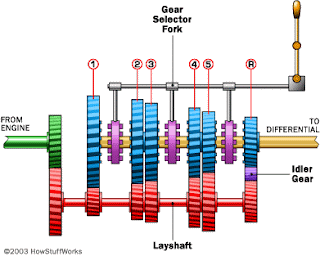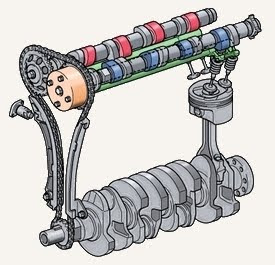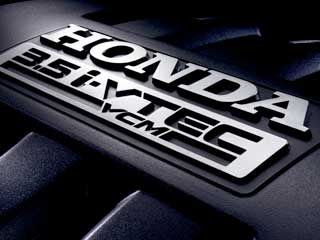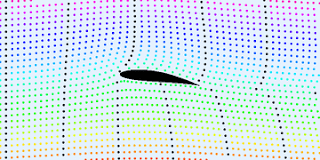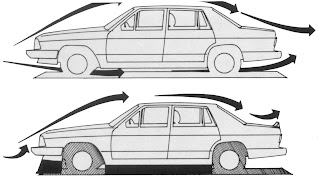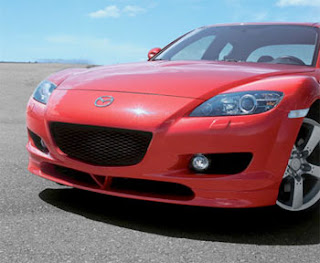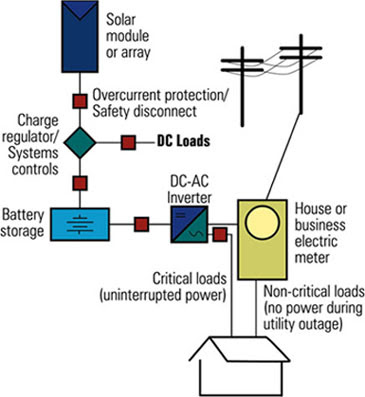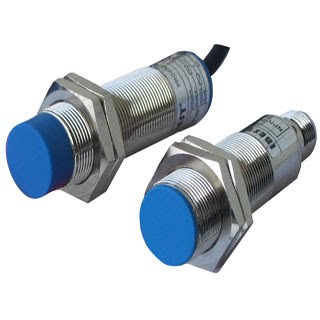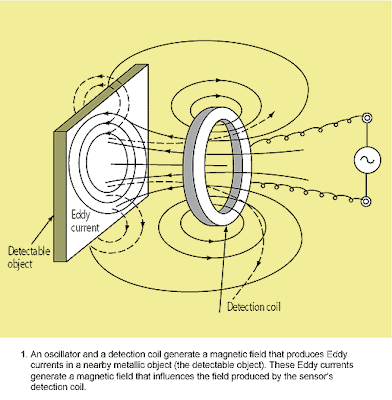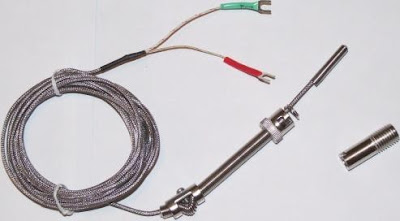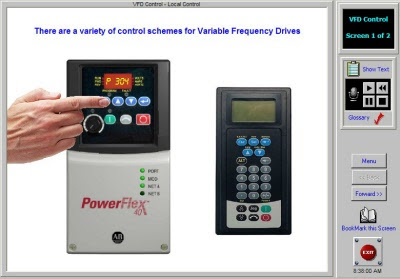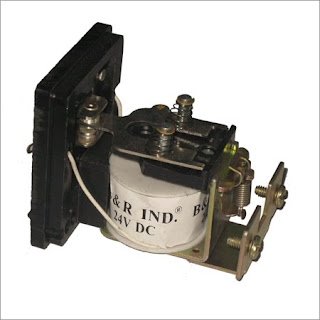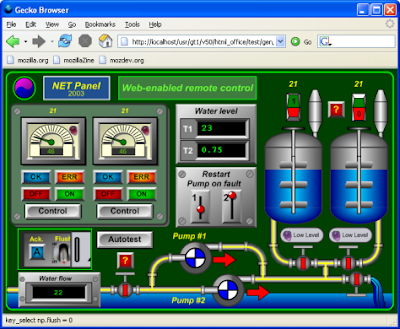For simplifying a problem - we all assume certain things. After solving it successfully, we forget our initial assumptions - as if we had not assumed anything. This is where that certain problem becomes more complicated. At the end of the day, we forget the problem and standardise the solution. So that people always remember a solution and NOT the problem for which it's created...
The better cliche about the above thought is, when people wanted to write in the outer space where the gravity was very low- Americans invented a zero-gravity pen spending millions of dollars and years of time. The Russians proposed that we can use a lead-pencil.
Now we will come to the subject. we all know that power systems have a frequency of 50Hz (or 60 Hz) and say the transmission voltage is 33kV(or may be 66kV). We fix these variables quite nicely and forget about these when problems arise. After all they believed to be constant!
What if these variables are manipulated to gain advantage at the expense of consumers? why a utility might want to manipulate those?
For example, instead of keeping the system frequency at 50 Hz (keeping in mind the natural tolerance limits, for e.g. 49.5Hz ~ 50.5Hz), what if we can reduce the frequency intentionally, say to 47Hz? Here we assume that the under-frequency tripping of circuit breakers are below 47Hz so that we can keep the system running without tripping. at the same time we have manual controls so that we can adjust the speed governing so that it does not automatically settle at 50Hz.
What will be the effects of running the system at lower than 50Hz. As we all know that in most cases , a power system is inductive in load. Thus remembering the relationship Reactance X=L*w=L*2pi*f. This ends up in saying that if the system frequency is reduced- inductance will become lower in magnitude. Which means we can MANIPULATE the reactive power requirement. But the active energy supplied will not change.(no change in energy units)
This has additional effects in electrical apparatus of consumers as they are designed to operate in standard 50Hz frequency.
The same case is applicable to the line-line volatge. If we can manually reduce the line voltage of a 33kV line to about 32kV, what will happen. Surely we know that certain loads can not operate because of the voltage drop such as ACs, UPSs. but what can be gained from this manipulation. normally if the voltage of each generator is adjusted a bit lower than standard voltage, the power factor indicated in each generator will improve. This means that now each generator is supplying less reactive power requirement - and this in turn reduces the overall line voltage. This has implications in fuel efficiencies in case of a diesel generator. in case of hydro generators too this has certain FAVOURABLE effects to the operators of the power system.
skip to main |
skip to sidebar
Electrical Power Engineering - Generation Transmission & Distribution
Exploring into a deep & broad insight of Electrical Power Engineering
Saturday, October 30, 2010
Saturday, July 24, 2010
The golden rule of power system operation
Say P - active power
Q - reactive power.
f - frequency
V - line voltage.
Then the golden rule is,
P is directly related with f.
Q is directly related with V.
Even certain experienced staff think that parameters such as line voltage depends on the active power produced and frequency may drop if there is not enough reactive power. This is Totally WRONG.
In other words,
If you are going to change the frequency of the supply you must increase the amount of fuel (eg. steam/diesel/HFO/waterflow) which in turn increases the prime-mover (eg. diesel engine/ gas turbine/ steam turbine/ hydro turbine) speed. But speed governors are meant to regulate this type of frequency variation and to maintain the speed of the prime mover.
If you are going to change the terminal voltage of the supply you must increase the excitation given to the alternator.
But keep in mind that the above are purely applicable to generators running isolated/islanded. Parallel operation and infinite grid operation are bit different and certain parameters can not be independently controlled (for eg. voltage in infinite grid).
If multiple generators are running in parallel, only by increasing the excitation of all generators - the voltage can be increased, and vice versa. If not, only the reactive power share will change, not the output voltage.
The other important aspect of operating a power system is to do with the power factor. People confuse with whether the power factor must lead or lag. There is another belief, improving the power factor means we try to make the 0.9 to 0.8 lagging. In almost every practical power system (there are few exceptions) , the power factor should be lagging, BUT not necessarily each and every generating set. In other words, even when the system power factor is lagging - one machine may be running with a leading power factor, at the expense of another.
Q - reactive power.
f - frequency
V - line voltage.
Then the golden rule is,
P is directly related with f.
Q is directly related with V.
Even certain experienced staff think that parameters such as line voltage depends on the active power produced and frequency may drop if there is not enough reactive power. This is Totally WRONG.
In other words,
If you are going to change the frequency of the supply you must increase the amount of fuel (eg. steam/diesel/HFO/waterflow) which in turn increases the prime-mover (eg. diesel engine/ gas turbine/ steam turbine/ hydro turbine) speed. But speed governors are meant to regulate this type of frequency variation and to maintain the speed of the prime mover.
If you are going to change the terminal voltage of the supply you must increase the excitation given to the alternator.
But keep in mind that the above are purely applicable to generators running isolated/islanded. Parallel operation and infinite grid operation are bit different and certain parameters can not be independently controlled (for eg. voltage in infinite grid).
If multiple generators are running in parallel, only by increasing the excitation of all generators - the voltage can be increased, and vice versa. If not, only the reactive power share will change, not the output voltage.
The other important aspect of operating a power system is to do with the power factor. People confuse with whether the power factor must lead or lag. There is another belief, improving the power factor means we try to make the 0.9 to 0.8 lagging. In almost every practical power system (there are few exceptions) , the power factor should be lagging, BUT not necessarily each and every generating set. In other words, even when the system power factor is lagging - one machine may be running with a leading power factor, at the expense of another.
Tuesday, July 13, 2010
A Bit of Automobile Technology
It would be nice to shift to a non-electrical topic for a change. A brief explanation would be provided about the recent past & current technology available in cars.
Different kinds of Transmission systems:
MT: Manual Transmission - The Coventional Gear selection system
AT: Automatic Transmission - The Automatic Gear selection system
ManuMatic/Tiptronic/GearTronic: Manu(al + Auto)matic system
CVT: Continuously Variable Transmission
Above the letters indicate the following:
1. P - Park
2. R - Reverse
3. N - Neutral
4. D - Drive
5. 2 - Second gear is maximum
6. L - Low/1st gear is maximum
Normally manual transmission employs a clutch but an auto transmission utilises a torque converter instead of clutch.
Few emission control systems:
CVCC: Compound Vortex Controlled Combustion by Honda for complying with emission standards
CC: Catalytic Converter used for treating toxic emissioons
Various ValveTrain systems:
VTEC: Variable Valve Timing and Lift Electronic Control by Honda
VVT-i : Variable Valve Timing with Intelligence developed by Toyota
SOHC: Single Over Head Camshaft system
DOHC: Double Over Head Camshaft system
Multiple Fuel delivery systems:
Carburettor:Conventional indirect injection
MFI: Mechanical Fuel Injection
EFI: Electronic Fuel Injection
Engine Efficiency Improvement systems:
Intercooler/Aftercooler:
Turbocharger/TurboSupercharger:
Passenger Safety systems:
ABS: AntiLock Braking System
EBD: Electronic Brakeforce Distribution
Emerging Aotomobile Design technologies:
HEV: Hybrid Electric Vehicle cosists of an IC Engine and Electric motors
Different kinds of Transmission systems:
MT: Manual Transmission - The Coventional Gear selection system
AT: Automatic Transmission - The Automatic Gear selection system
ManuMatic/Tiptronic/GearTronic: Manu(al + Auto)matic system
CVT: Continuously Variable Transmission
Above the letters indicate the following:
1. P - Park
2. R - Reverse
3. N - Neutral
4. D - Drive
5. 2 - Second gear is maximum
6. L - Low/1st gear is maximum
Normally manual transmission employs a clutch but an auto transmission utilises a torque converter instead of clutch.
Few emission control systems:
CVCC: Compound Vortex Controlled Combustion by Honda for complying with emission standards
CC: Catalytic Converter used for treating toxic emissioons
Various ValveTrain systems:
VTEC: Variable Valve Timing and Lift Electronic Control by Honda
VVT-i : Variable Valve Timing with Intelligence developed by Toyota
SOHC: Single Over Head Camshaft system
DOHC: Double Over Head Camshaft system
Multiple Fuel delivery systems:
Carburettor:Conventional indirect injection
MFI: Mechanical Fuel Injection
EFI: Electronic Fuel Injection
Engine Efficiency Improvement systems:
Intercooler/Aftercooler:
Turbocharger/TurboSupercharger:
Passenger Safety systems:
ABS: AntiLock Braking System
EBD: Electronic Brakeforce Distribution
Emerging Aotomobile Design technologies:
HEV: Hybrid Electric Vehicle cosists of an IC Engine and Electric motors
Monday, June 28, 2010
Half-a-loaf of Automotive Aerodynamics (AA)
what is aerodynamics?
Aerodynamics is a branch of dynamics concerned with studying the motion of air, particularly when it interacts with a moving object as defined by wikipedia.
Aerodynamics of automobiles:
drag:
drag is a fluid dynamics term, sometimes called as air resistance or fluid resistance. It is defined as "forces that oppose the relative motion of an object through a fluid. Drag forces act in a direction opposite to the oncoming flow velocity". (wikipedia)
lift:
A fluid flowing past the surface of a body exerts a surface force on it. Lift is defined to be the component of this force that is perpendicular to the oncoming flow direction. It contrasts with the drag force, which is defined to be the component of the surface force parallel to the flow direction.(wikipedia)
Note: In aircrafts Lift/drag ratio is expected to be higher. But this is not the case in automobiles where lift is to be reduced and drag too to be reduced. What is especially required in an autombile such as a racing car is the downforce (as opposed to the lift required in aircrafts).
Upper: non-aerodynamic car; Lower: aerodynamically improved design
From: http://www.generalamherst.com
A diffuser is seen in most racing cars:
Rear diffuser of Porsche - Courtesy: Wikipedia
Rear spoiler of Toyota - Courtesy: Wikipedia
Front Air Dam of Mazda - Courtesy: Mazda
Please visit hotrod for a fine detailed description of the role of aerodynamics in automobiles!
Aerodynamics is a branch of dynamics concerned with studying the motion of air, particularly when it interacts with a moving object as defined by wikipedia.
Aerodynamics of automobiles:
drag:
drag is a fluid dynamics term, sometimes called as air resistance or fluid resistance. It is defined as "forces that oppose the relative motion of an object through a fluid. Drag forces act in a direction opposite to the oncoming flow velocity". (wikipedia)
| Shape and flow | Form drag | Skin friction |
|---|---|---|
| 0% | 100% | |
| ~10% | ~90% | |
| ~90% | ~10% | |
| 100% | 0% |
lift:
A fluid flowing past the surface of a body exerts a surface force on it. Lift is defined to be the component of this force that is perpendicular to the oncoming flow direction. It contrasts with the drag force, which is defined to be the component of the surface force parallel to the flow direction.(wikipedia)
Note: In aircrafts Lift/drag ratio is expected to be higher. But this is not the case in automobiles where lift is to be reduced and drag too to be reduced. What is especially required in an autombile such as a racing car is the downforce (as opposed to the lift required in aircrafts).
Upper: non-aerodynamic car; Lower: aerodynamically improved design
From: http://www.generalamherst.com
A diffuser is seen in most racing cars:
Rear diffuser of Porsche - Courtesy: Wikipedia
Rear spoiler of Toyota - Courtesy: Wikipedia
Front Air Dam of Mazda - Courtesy: Mazda
Please visit hotrod for a fine detailed description of the role of aerodynamics in automobiles!
Friday, May 28, 2010
Non-Conventional Renewable Energy (NCRE)
The term renewable energy now has become a magical word in energy. The world is constantly changing and so is the power sector. Nowadays people talk about 'deviating' from the 'conventional' energy sources such as thermal, hydro, nuclear etc and magically spell wind, solar, biomass, wave, tidal, geothermal, and so on.
Are those viable and financially feasible? what about the technical feasibility - such as reliability, stability issues?
Wind energy:
Wind takes the first priority when it comes to non-conventioanl renewable energy source. Though it is unrelaible at times, may have stability issues, voltage problems, might need reactive power compensation. Still it is CLEAN, Not forgetting that it needs a very high initial investment in comparative terms. Remember that open cycle gas turbines are the opposite. Their capital cost is in the lower limits in any commercial scale power systems.
A Horizontal axis wind turbine generator: from Howstuffworks
Solar Energy:
Solar PV
Solar energy is said to be abundant, though the fabrication of these photovoltaic semiconductors are not so easy. their Cost/Wattage is significantly high and the average payback period is well beyond 10 years.
Solar thermal
Biomass Energy:
Wave/Tide Energy:
Are those viable and financially feasible? what about the technical feasibility - such as reliability, stability issues?
Wind energy:
Wind takes the first priority when it comes to non-conventioanl renewable energy source. Though it is unrelaible at times, may have stability issues, voltage problems, might need reactive power compensation. Still it is CLEAN, Not forgetting that it needs a very high initial investment in comparative terms. Remember that open cycle gas turbines are the opposite. Their capital cost is in the lower limits in any commercial scale power systems.
A Horizontal axis wind turbine generator: from Howstuffworks
Solar Energy:
Solar PV
Solar energy is said to be abundant, though the fabrication of these photovoltaic semiconductors are not so easy. their Cost/Wattage is significantly high and the average payback period is well beyond 10 years.
Solar thermal
Biomass Energy:
Wave/Tide Energy:
Industrial Automation
Industrial Automation is not a totally new concept. It has been practised in the industry for a long time. But the introduction of personal computers has revolutionised the automation industry providing easy access, custom software applications and so on.
Automation is a process where sensors/transducers are employed to 'sense' the signal, one or more controllers 'guiding' the operation involved and the desired output is achieved in the form of actuators/motors/physical parameters such as temperature/pH in a factory.
Sensors:
Pressure sensors
Position transducers
Proximity sensors
Temperature sensors
Humidity sensors
These sensors measure the relative humidity by converting the signals to desired voltage/current output.
Level sensors
Used to measure the level, for e.g. water level in a tank/ chemical level in a container.
Load cells
These are utilised to measure the weight in electronic form.
Inputs:
Analog input
4-20mA current input
0-10V voltage input
Digital inputs
push buttons
Controllers:
Process indicators
Timers
Counters
Temperature controllers - PID
PC-based controllers
Input-output modules
Programmable logic controllers (PLC): AC/DC inputs & outputs
Variable speed drives (VSD)/ Variable frequency drives (VFD)
Converters:
Converters are used to change the signal type from one to another. This conversion may take a form of analog signals to digital signals (ADC) or changing the signal medium such as RS232 serial type to RS485 two-wire type.
Actuators:
Based on the controller output, actuators would perform the desired action to change the controlled variable. These are mostly motion-oriented, for e.g. motors, solenoid valves, electromagnetic relays etc.
- Solenoid valves (electrically controlled valves)
- Motors such as steppers, servos, permanent magnet types
- Voltage-controlled electromagnetic relays
Software:
Automation configuration software (between h/w and s/w)
Automation display software ( to display the controlled parameters)
Supervisory control & Data acquisition (SCADA)
Automation is a process where sensors/transducers are employed to 'sense' the signal, one or more controllers 'guiding' the operation involved and the desired output is achieved in the form of actuators/motors/physical parameters such as temperature/pH in a factory.
Sensors:
Pressure sensors
Position transducers
- linear
- rotary
Proximity sensors
- capacitive proximity sensors
- inductive proximity sensors
- photoelectric proximity sensors
Temperature sensors
- Resistance Temperature Device (RTD)
- Thermocouple (TC)
- Thermistors
Humidity sensors
These sensors measure the relative humidity by converting the signals to desired voltage/current output.
Level sensors
Used to measure the level, for e.g. water level in a tank/ chemical level in a container.
Load cells
These are utilised to measure the weight in electronic form.
Inputs:
Analog input
4-20mA current input
0-10V voltage input
Digital inputs
push buttons
Controllers:
Process indicators
Timers
Counters
Temperature controllers - PID
PC-based controllers
Input-output modules
Programmable logic controllers (PLC): AC/DC inputs & outputs
Variable speed drives (VSD)/ Variable frequency drives (VFD)
Converters:
Converters are used to change the signal type from one to another. This conversion may take a form of analog signals to digital signals (ADC) or changing the signal medium such as RS232 serial type to RS485 two-wire type.
Actuators:
Based on the controller output, actuators would perform the desired action to change the controlled variable. These are mostly motion-oriented, for e.g. motors, solenoid valves, electromagnetic relays etc.
- Solenoid valves (electrically controlled valves)
- Motors such as steppers, servos, permanent magnet types
- Voltage-controlled electromagnetic relays
Software:
Automation configuration software (between h/w and s/w)
Automation display software ( to display the controlled parameters)
Supervisory control & Data acquisition (SCADA)
Labels
- Automation (1)
- Electrical Machines (1)
- High Voltage Engineering (1)
- Mechanical Engineering (3)
- Power Distribution (2)
- Power Electronics (1)
- Power Generation (6)
- Power Systems (1)
- Power Transmission (4)
- Power Utilisation (2)
Blog Archive
Links
- The art & science of protective relaying: the complete book
- Ontario Power generation: Technical documents in Nuclear reactors
- IIT India: National programme on technology enhanced learning
- Siemens: downloadable STEP courses
- National renewable energy laboratory: Student resources
- Occupational Safety & Health Administartion: Electric power glossary
About Me
Power Engineering is a part & parcel of Electrical Engineering which consists of the study & application of Power Systems. It can be further categorised into topics such as power generation, power transmission, power utilisation, electrical machines, power electronics, high voltage engineering, power system operation, planning, modelling, simulation, protection ...the list never ends!


